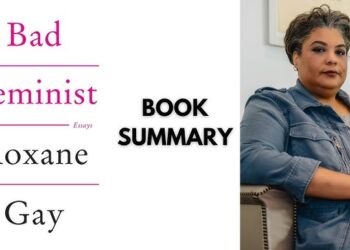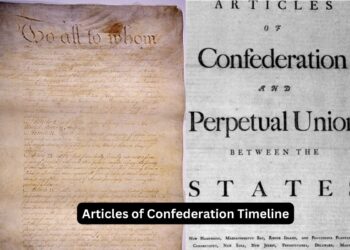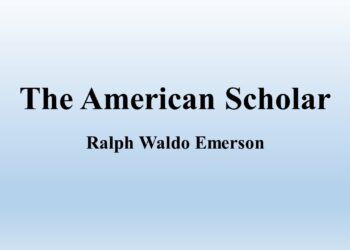Introduction
Essay Summary How Should One Read a Book by Virginia Woolf Virginia Woolf’s essay “How Should One Read a Book?” is a contemplative exploration of the reading experience and the deeper relationship between the reader and the text. Written in the early 20th century, Woolf’s reflections are not merely practical tips for reading; they delve into the emotional and intellectual engagement that literature demands. Woolf emphasizes the importance of understanding the context, the author’s intentions, and the unique perspective each reader brings to the reading process.
Essay Summary How Should One Read a Book by Virginia Woolf This essay serves as an invitation to approach reading not just as a passive act but as a dynamic interaction that can enrich one’s life and broaden one’s understanding of the world.
Summary
1. The Nature of Reading
Woolf begins by discussing the nature of reading itself. She posits that reading is an intricate and multifaceted experience, where the reader engages not only with the words on the page but also with their own thoughts and emotions. Reading should be an immersive experience, allowing the reader to escape into different worlds and perspectives.
Woolf asserts that the act of reading is not solely about comprehension; it is about resonance. She encourages readers to allow themselves to be moved by the text, to feel the emotions that the author conveys, and to immerse themselves in the narrative. This immersion requires both a receptive mindset and a willingness to engage with the text on a deeper level.
READ MORE
2. The Reader’s Perspective
Woolf emphasizes the importance of the reader’s perspective in shaping the reading experience. She argues that each reader brings their own unique background, experiences, and emotions to the text, which influences how they interpret and understand it. This subjectivity is crucial, as it creates a personal connection between the reader and the narrative.
Woolf suggests that readers should embrace their individuality when approaching a book. She acknowledges that different readers may have vastly different reactions to the same text, and that these varied interpretations are what enrich the literary landscape. This perspective also highlights the idea that reading is an active process rather than a passive one.

3. Understanding Context and Intent
Woolf discusses the importance of understanding the context in which a book was written. She argues that readers should consider the historical, cultural, and social circumstances surrounding the author and their work. This contextual awareness can enhance the reading experience by providing insight into the motivations and intentions behind the text.
By understanding the author’s context, readers can better appreciate the themes and ideas presented in the work. Woolf urges readers to explore the life of the author, their influences, and the societal issues they addressed. This understanding deepens the reader’s connection to the text and fosters a greater appreciation for the complexity of literature.
4. Engagement with the Text
Woolf encourages readers to engage actively with the text. She advocates for a thoughtful and contemplative reading style that allows for reflection and analysis. This engagement involves not just understanding the plot or characters, but also grappling with the underlying themes and ideas presented by the author.
Essay Summary How Should One Read a Book by Virginia Woolf Woolf suggests that readers should ask themselves questions as they read: What is the author trying to convey? How does this text resonate with my own experiences? What emotions does it evoke? By posing these questions, readers can deepen their understanding and create a richer reading experience.
5. The Role of Emotion in Reading
Woolf places significant emphasis on the emotional impact of literature. She argues that a book should elicit feelings and provoke thought, challenging readers to confront their own emotions and experiences. The best literature, according to Woolf, transcends mere storytelling; it becomes a means of exploring the human condition.
Essay Summary How Should One Read a Book by Virginia Woolf Woolf believes that literature has the power to evoke empathy and understanding, allowing readers to connect with lives and experiences different from their own. This emotional engagement is essential for meaningful reading, as it fosters a deeper appreciation for the nuances of human experience.
READ MORE
6. Literary Criticism and Appreciation
Woolf addresses the role of literary criticism in shaping one’s reading experience. She acknowledges the value of criticism but argues that it should not overshadow the reader’s personal engagement with the text. Literary criticism can provide insights and analysis, but it should serve as a complement to the reader’s own interpretations and feelings.Essay Summary How Should One Read a Book by Virginia Woolf
Essay Summary How Should One Read a Book by Virginia Woolf She encourages readers to trust their instincts and responses to literature. While critical analysis can enhance understanding, Woolf warns against letting it dictate one’s experience. The joy of reading lies in personal interpretation and emotional resonance, which should remain paramount.
7. The Importance of Re-reading
Woolf highlights the importance of re-reading books, suggesting that doing so can reveal new layers of meaning and understanding. Each reading can be a different experience, shaped by the reader’s evolving perspective and life circumstances.Essay Summary How Should One Read a Book by Virginia Woolf
Re-reading allows for a deeper engagement with the text and can illuminate themes or details that were previously overlooked. Woolf encourages readers to revisit texts that resonate with them, as this process can lead to a richer appreciation of the work and its significance.
READ MORE
8. The Transformative Power of Reading
Ultimately, Woolf argues that reading has the power to transform individuals and society. Through literature, readers can gain new insights into themselves and the world around them. Reading encourages empathy, fosters understanding, and promotes intellectual growth.
Woolf’s essay serves as a reminder of the profound impact literature can have on our lives. By engaging thoughtfully and emotionally with texts, readers can cultivate a deeper connection to the human experience and enrich their understanding of the world.

Conclusion
Virginia Woolf’s “How Should One Read a Book?” offers a nuanced exploration of the reading experience, emphasizing the importance of personal engagement, context, and emotional resonance. Woolf encourages readers to approach literature with an open mind and a willingness to explore the complexities of the text.
By fostering a deeper understanding of both the author’s intentions and the reader’s perspective, Woolf highlights the transformative power of literature and its ability to enrich our lives. This essay remains a relevant and insightful guide for anyone seeking to deepen their relationship with literature and enhance their reading experience.
FAQ
1. What is the main argument of Virginia Woolf’s essay?
Woolf argues that reading should be an active and immersive experience, emphasizing the importance of emotional engagement, personal interpretation, and understanding the context of the text.
2. How does Woolf suggest readers approach a book?
Woolf encourages readers to engage with the text thoughtfully, considering their own emotions and experiences, as well as the author’s context and intentions.
3. What role does context play in reading, according to Woolf?
Context is crucial for understanding a book’s themes and ideas. By considering the historical and cultural background of the author, readers can enhance their appreciation of the text.
4. Why does Woolf emphasize the emotional impact of literature?
Woolf believes that literature should evoke feelings and provoke thought, allowing readers to connect with different perspectives and explore the human condition.
5. How does Woolf view literary criticism in relation to reading?
While acknowledging the value of literary criticism, Woolf argues that it should not overshadow personal engagement with the text. Readers should trust their instincts and interpretations.
6. What is the significance of re-reading a book, according to Woolf?
Re-reading allows readers to uncover new layers of meaning and appreciate the text from different perspectives, enhancing the overall reading experience.
7. How does Woolf define the transformative power of reading?
Woolf asserts that reading can lead to personal and societal transformation by fostering empathy, understanding, and intellectual growth.
8. What is the overall tone of Woolf’s essay?
The tone is reflective and contemplative, encouraging readers to engage deeply with literature and appreciate the complexities of the reading experience.
READ MORE

















